How To Clean A Concrete Floor After Removing Carpeting
Removing Carpet Glue : A Step By Step Guide
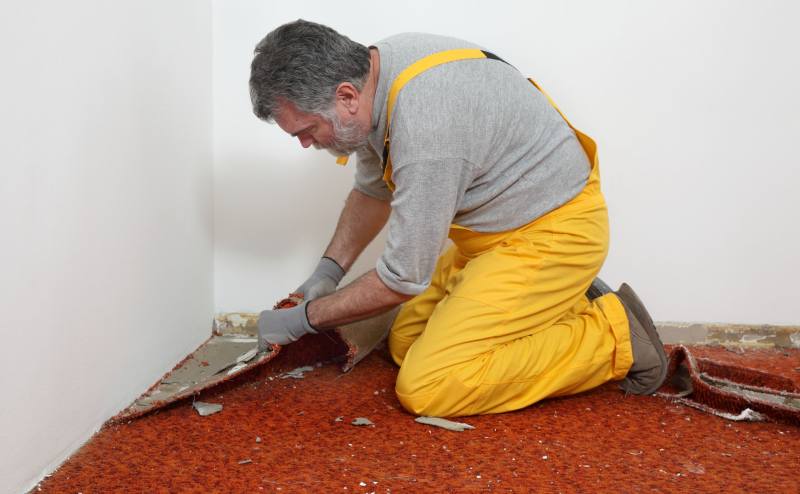
Home and property owners frequently renovate living spaces. This can include anything from replacing an old roof, changing the paint color, new kitchen cabinets, or adding a home automation system. Small changes can make a setting more comfortable and increase the value of a property.
At Concrete Camouflage, we frequently hear from homeowners, designers, and architects who are interested in changing flooring material - many of whom started with carpet and would like to transition to concrete.
Unfortunately, when a carpet is removed from a concrete subfloor, it often leaves behind remnants of carpet glue. Anyone who has been through this process knows how frustrating this can be. Carpet adhesive is stubborn and difficult to remove. Leaving the glue on the floor is not a good option because it can collect grime. It also makes applying a concrete stain color challenging because the stain can't get past the glue to do its job.
The good news is removing carpet glue from a concrete floor is possible. All you need is the right tools and methods to get the job done. Here are our recommended steps to take.
Step 1: Scrape the concrete glue
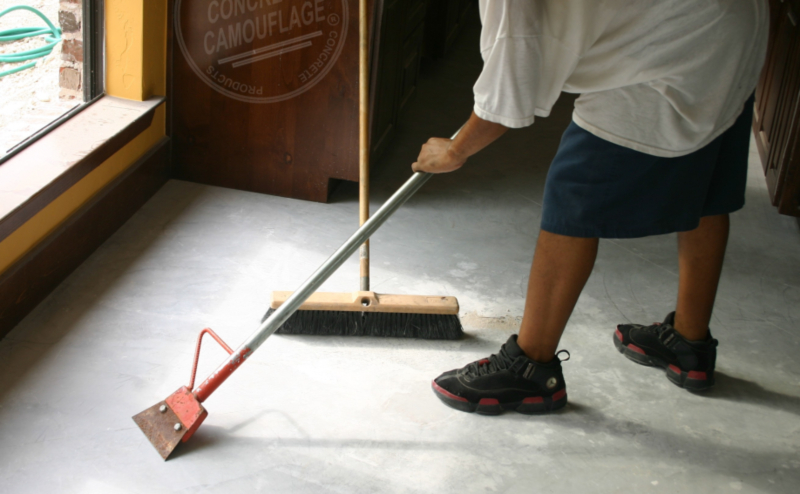
Scrape off as much of the concrete glue as possible. You will want to use a scraper with a sharp razor edge. This will require some elbow grease.
Many times it is possible to remove all the concrete glue from the surface with this step alone. If that isn't the case, then you will need to sweep away the glue chunks that you were able to lodge loose and move onto step 2.
Step 2: Apply boiling water
Depending on the specific glue used and its age, you may be able to simply boil a pot of water and apply it to the dry glue in order to loosen it up. If there is still a significant amount of glue covering the concrete, then you will want to use a large pot so you have enough water. Allow the hot water to mix with the glue for 1-2 minutes.
We recommend initially trying boiling water because it is the cheapest option and doesn't have any toxins. Being free, boiling water is worth a try, but be very careful to not splash any onto yourself which could cause severe burns. Lower the pan to the floor and slowly pour it out.
Step 3: Scrub the loosened glue
Scrub the moistened glue off with a concrete floor scrubber or continue with the scraper. Apply more water and repeat as necessary.
Step 4: Apply glue remover
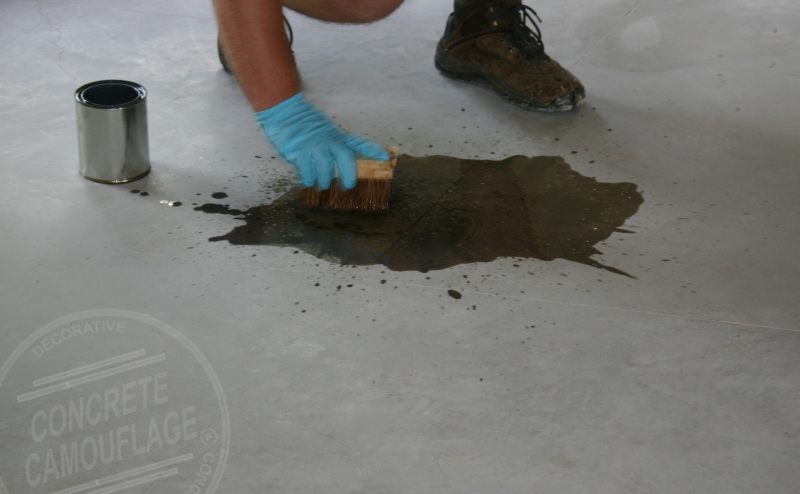
If you are unable to remove all the dry glue with hot water, then you should next try using a heavy duty glue remover or mastic remover. Adhesive removers will chemically soften the glue, but they can be hazardous so ensure plenty of ventilation and be sure to read all product labels - including directions, cautions, and warnings.
Use the scraper or stiff straw scrubbing brush to continue removing the excess glue debris.
Step 5: Sand the floor
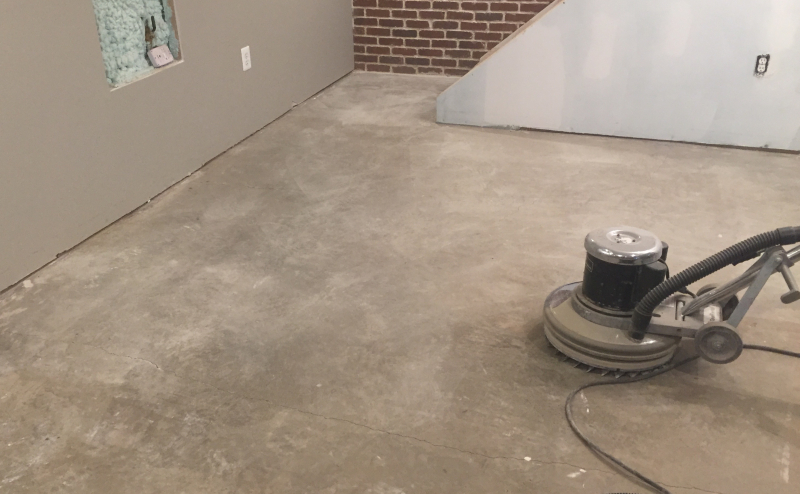
Even once you've removed the glue from the surface, it's important to ensure you've also removed it from the pores of the concrete. If glue is still trapped in the concrete pores then acid stain cannot penetrate it. This is why it's a good idea to sand the floor.
A rented floor sander or a floor buffing machine with a sanding disk should get the job done. Use an aggressive grit to get the bulk of the glue off and then switch to a finer grit (in the 300's range should suffice) to finalize the sanding across the floor.
Be careful not to go overboard with sanding because you could sand deeper than needed and possibly expose the aggregate. In addition, keep in mind that sanding the concrete will make it more porous and will soak up more acid stain and sealer.
Step 6: Troubleshoot
If you are still having trouble removing the glue even after trying the methods outlined above, you will need to continue troubleshooting. One option is to use a heat gun to soften the glue. If you do not have a heat gun, then you can try using an iron. Be careful when using an iron and make sure to cover the glue on the floor with a thin towel beforehand.
Finally, if you are still left with glue marks at this point, then you can try applying a highlight coat, scored pattern, multiple color schemes or mixing and using watercolor paints between the coats of sealer, to mask the residue.
Word of Advice on Carpet Tack Strips
Most carpet is secured along the outer edge with a tack strip, which are typically nailed into the concrete. When you remove the tack strip, it tends to leave a small hole where the concrete has been broken from the nails. Using a concrete patching material will fill the hole but will also stain a different color from the rest of the floor, causing a new problem to solve.
We recommend that you do not patch the holes. Instead, consider continuing with staining the concrete. After you have neutralized and rinsed the flooring area, and before applying the sealer, fill the tack strip holes with a clear epoxy. This will allow the stain color to show through while also leveling out the surface so the divet is no longer there. Be careful to ensure you smooth the top of the epoxy patch evenly with the top of the concrete so you don't inadvertently create a small hump.
Finished Product & Final Thoughts
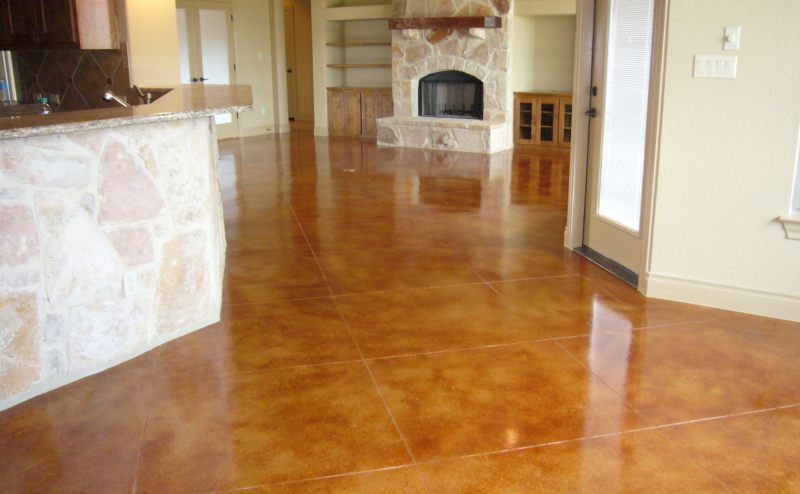
Removing carpet glue from concrete floors can be a pain. However, you should not let this deter you from making desired changes to your flooring. The key is to test different tactics and take the necessary precautions. If you are unable to remove the glue, contact an expert for help.
How To Clean A Concrete Floor After Removing Carpeting
Source: https://www.concretecamouflage.com/how_to_remove_carpet_glue.cfm
Posted by: browntoosed.blogspot.com

0 Response to "How To Clean A Concrete Floor After Removing Carpeting"
Post a Comment